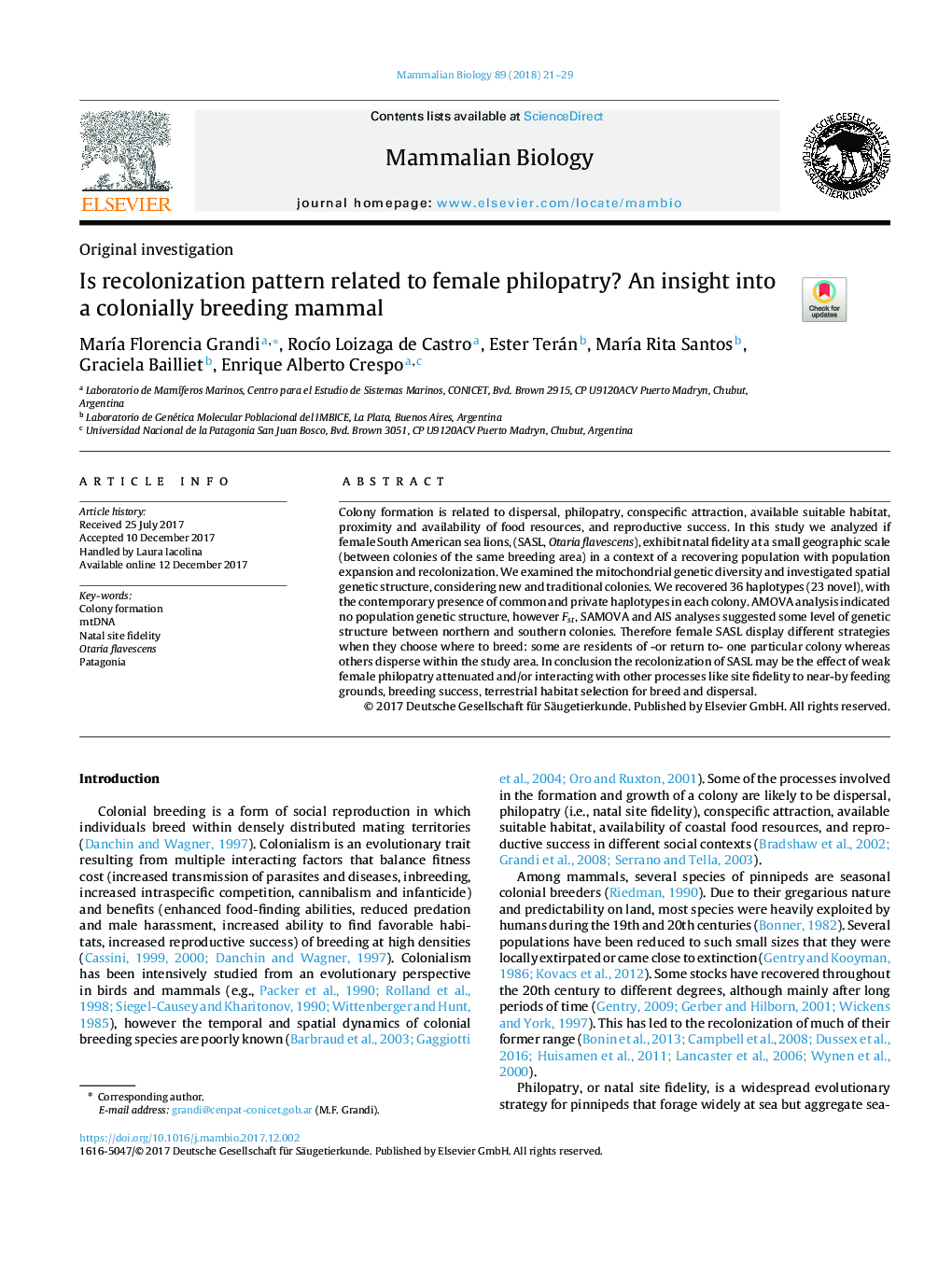| Article ID | Journal | Published Year | Pages | File Type |
|---|---|---|---|---|
| 8475684 | Mammalian Biology - Zeitschrift für Säugetierkunde | 2018 | 9 Pages |
Abstract
Colony formation is related to dispersal, philopatry, conspecific attraction, available suitable habitat, proximity and availability of food resources, and reproductive success. In this study we analyzed if female South American sea lions, (SASL, Otaria flavescens), exhibit natal fidelity at a small geographic scale (between colonies of the same breeding area) in a context of a recovering population with population expansion and recolonization. We examined the mitochondrial genetic diversity and investigated spatial genetic structure, considering new and traditional colonies. We recovered 36 haplotypes (23 novel), with the contemporary presence of common and private haplotypes in each colony. AMOVA analysis indicated no population genetic structure, however Fst, SAMOVA and AIS analyses suggested some level of genetic structure between northern and southern colonies. Therefore female SASL display different strategies when they choose where to breed: some are residents of -or return to- one particular colony whereas others disperse within the study area. In conclusion the recolonization of SASL may be the effect of weak female philopatry attenuated and/or interacting with other processes like site fidelity to near-by feeding grounds, breeding success, terrestrial habitat selection for breed and dispersal.
Related Topics
Life Sciences
Agricultural and Biological Sciences
Animal Science and Zoology
Authors
MarÃa Florencia Grandi, RocÃo Loizaga de Castro, Ester Terán, MarÃa Rita Santos, Graciela Bailliet, Enrique Alberto Crespo,
